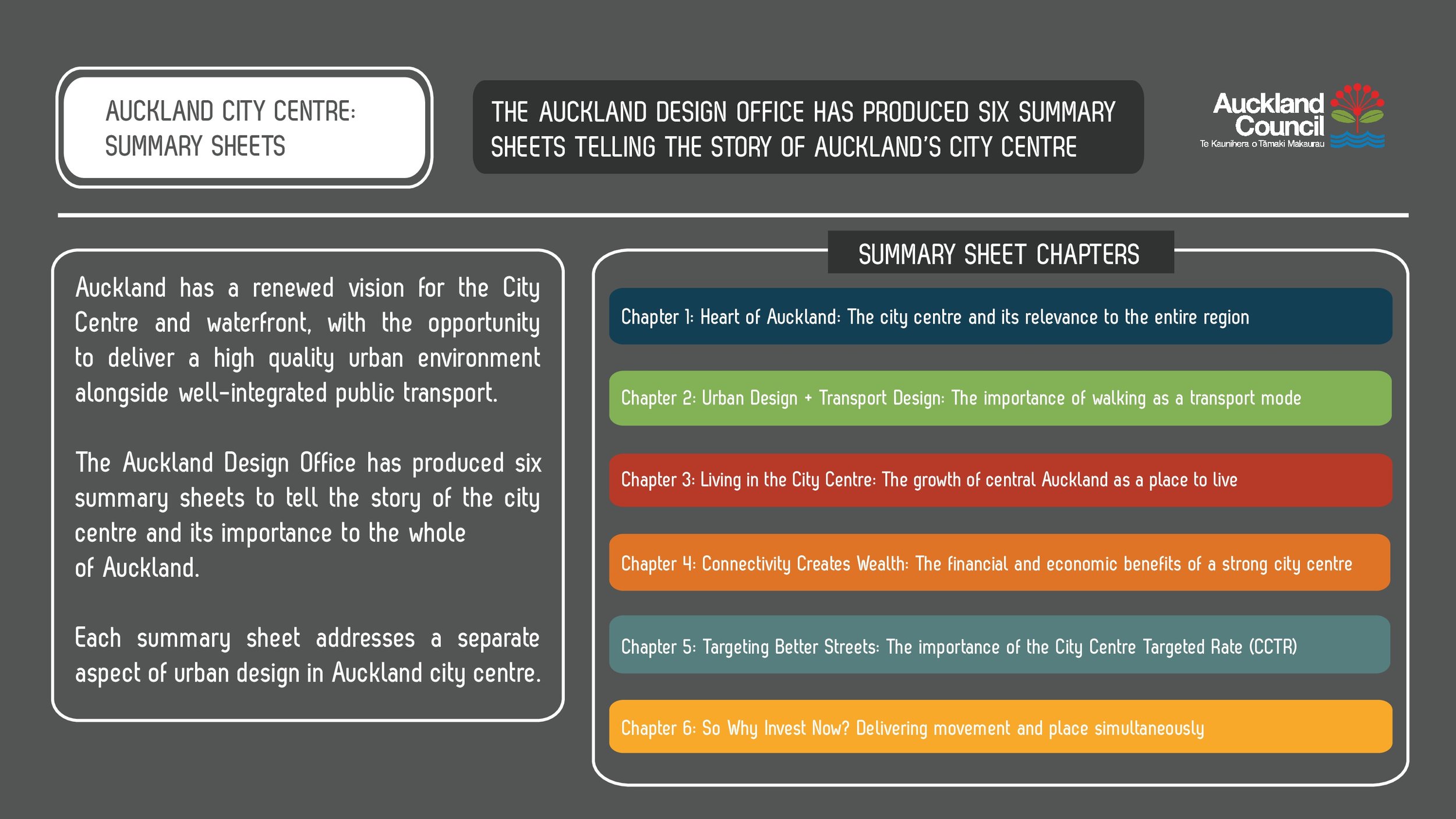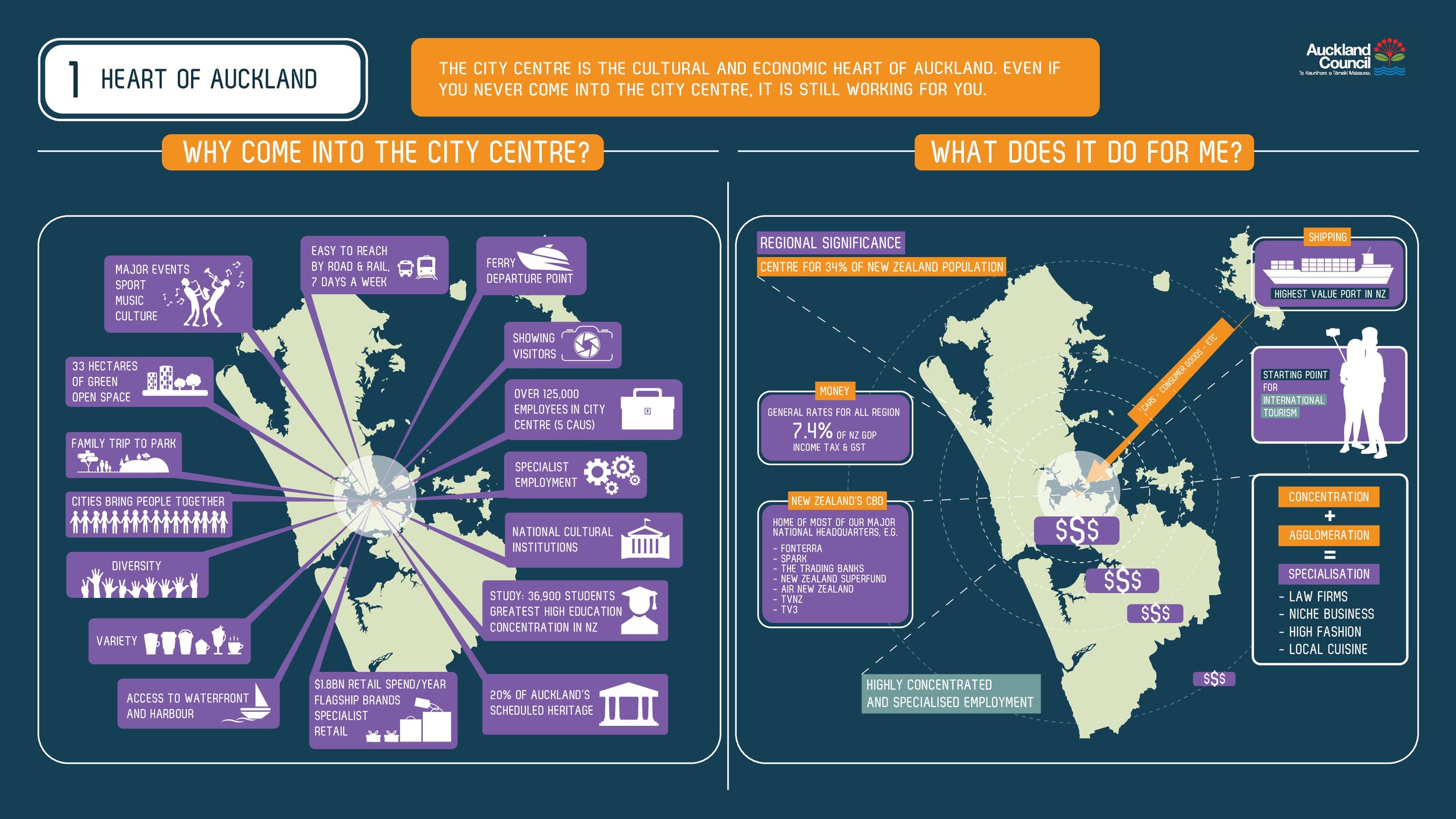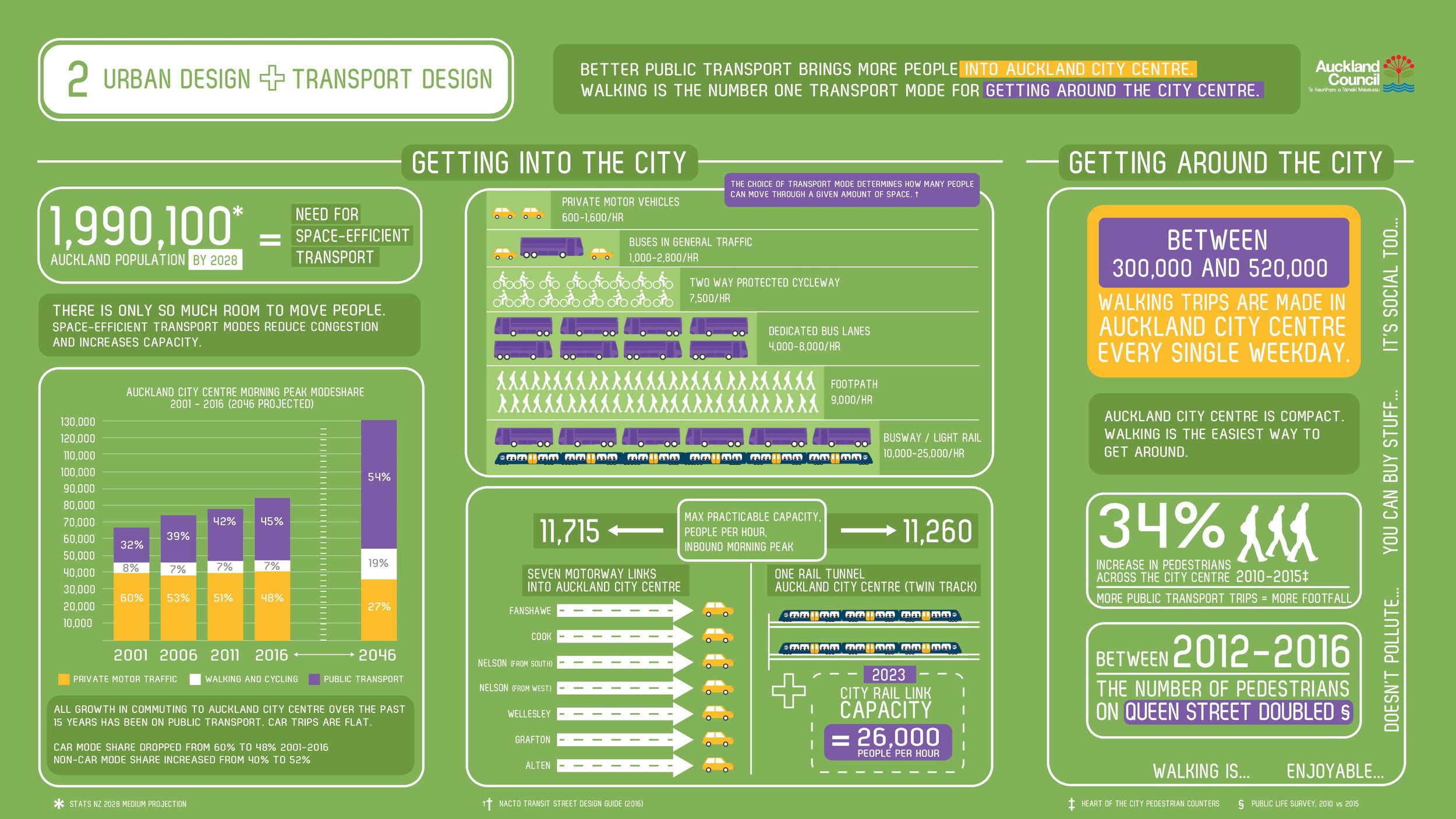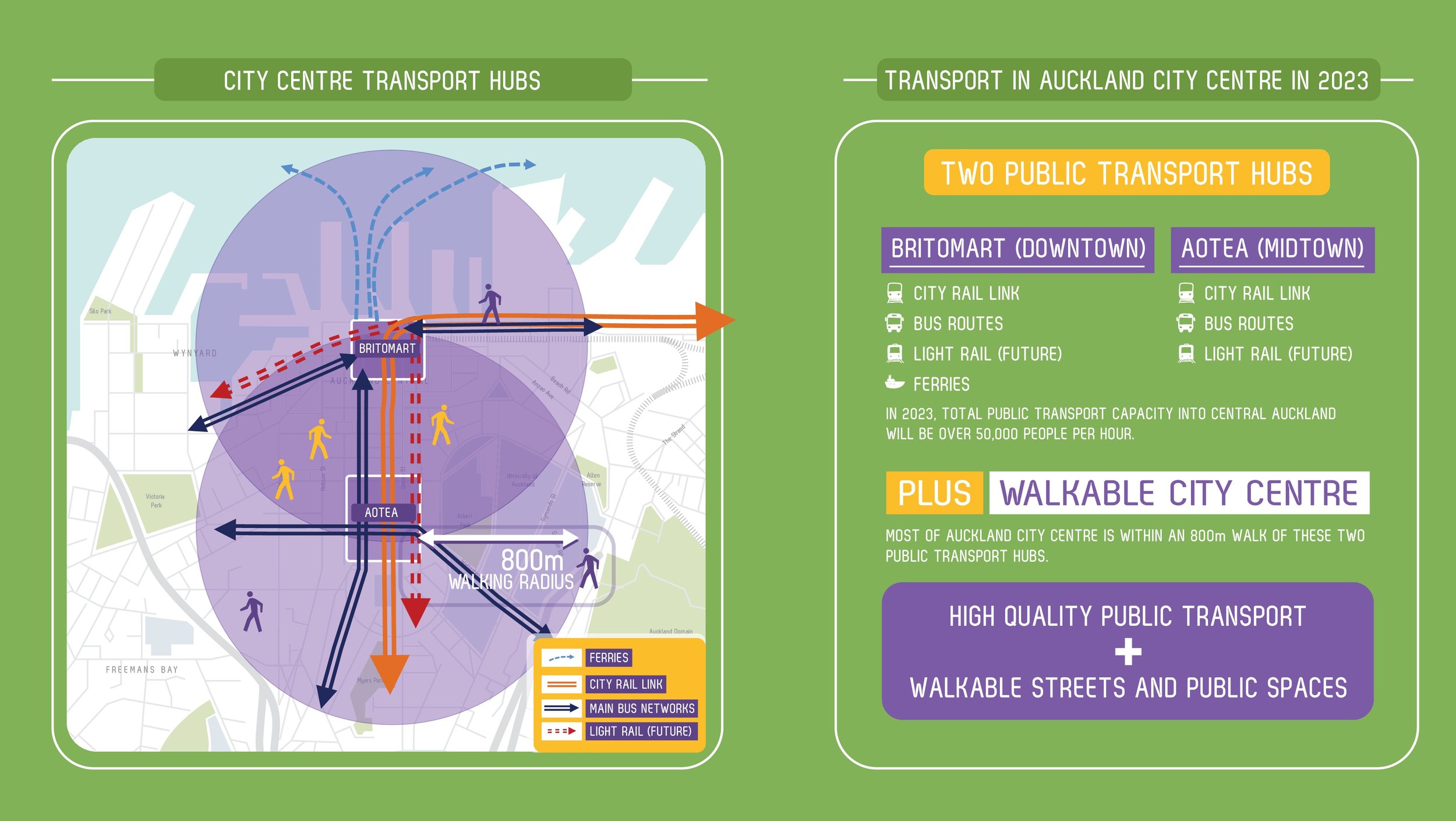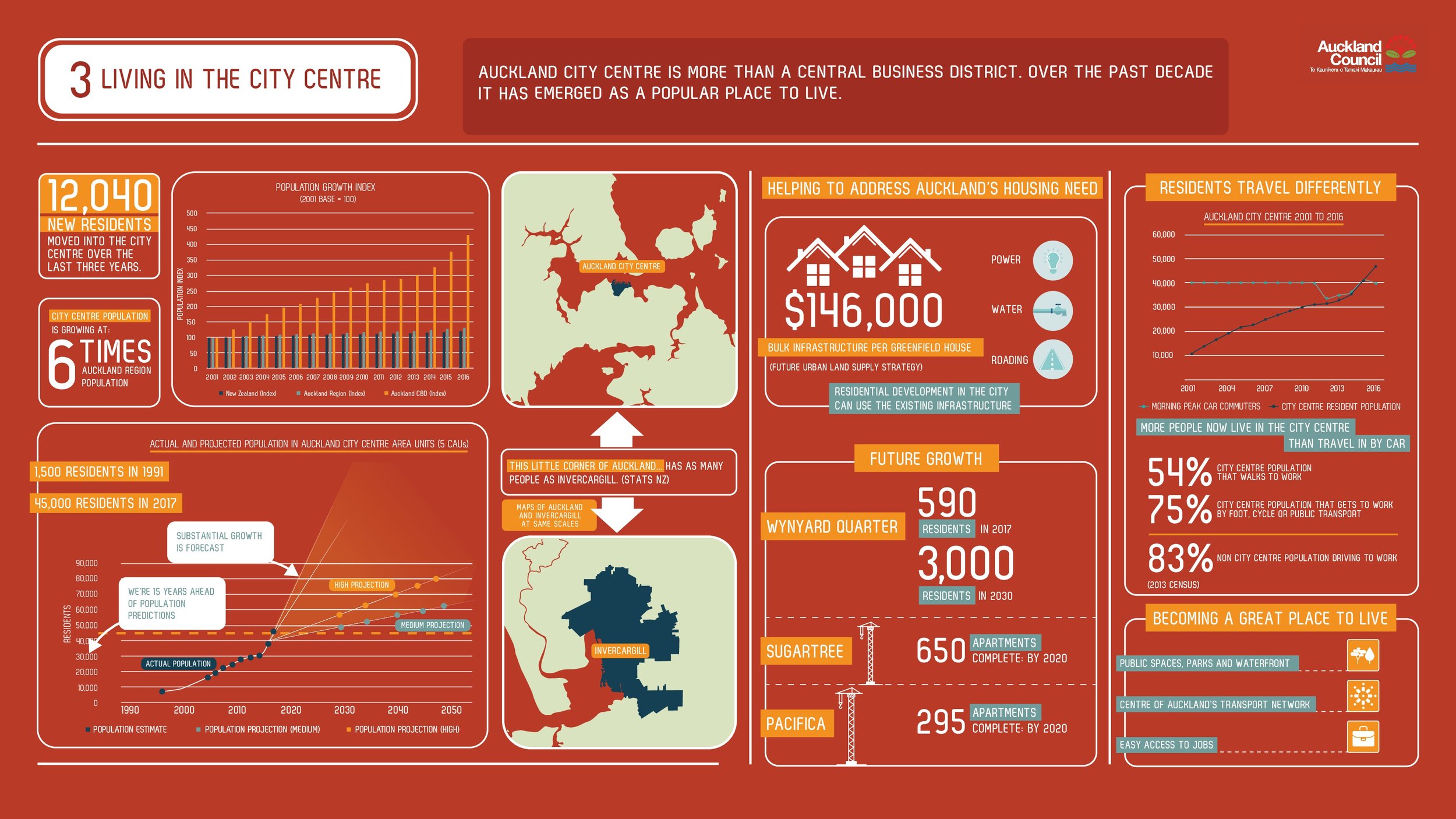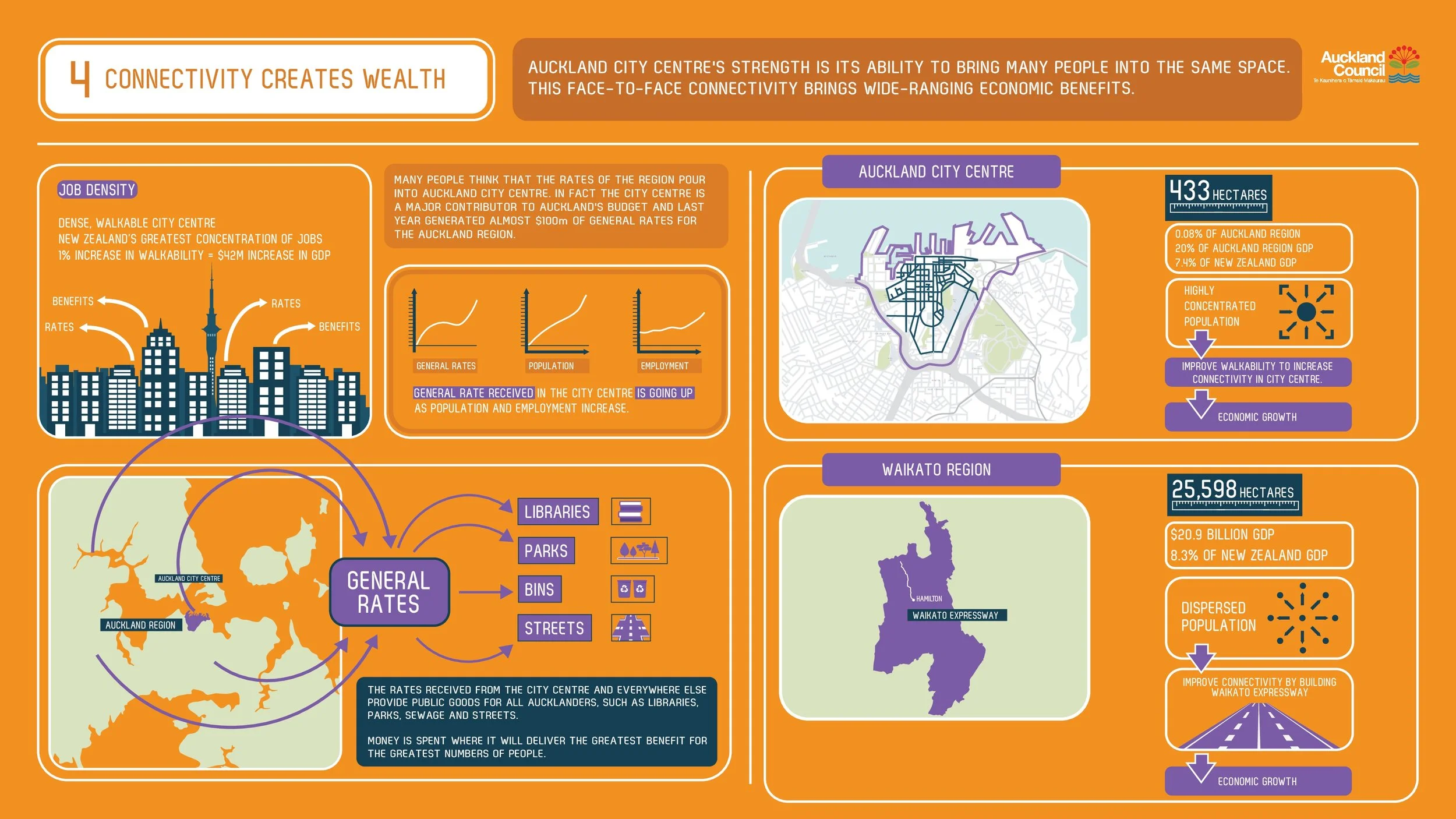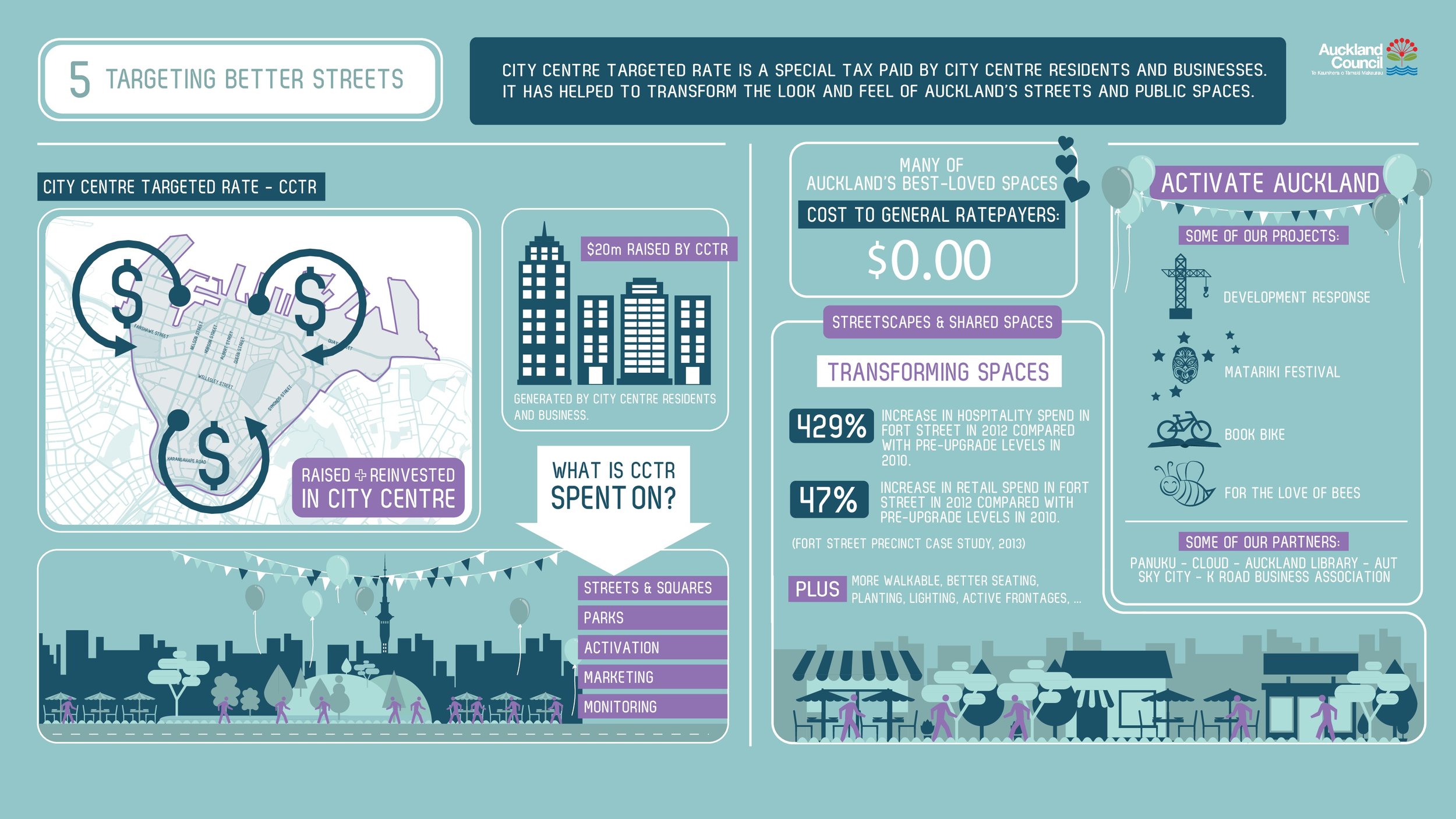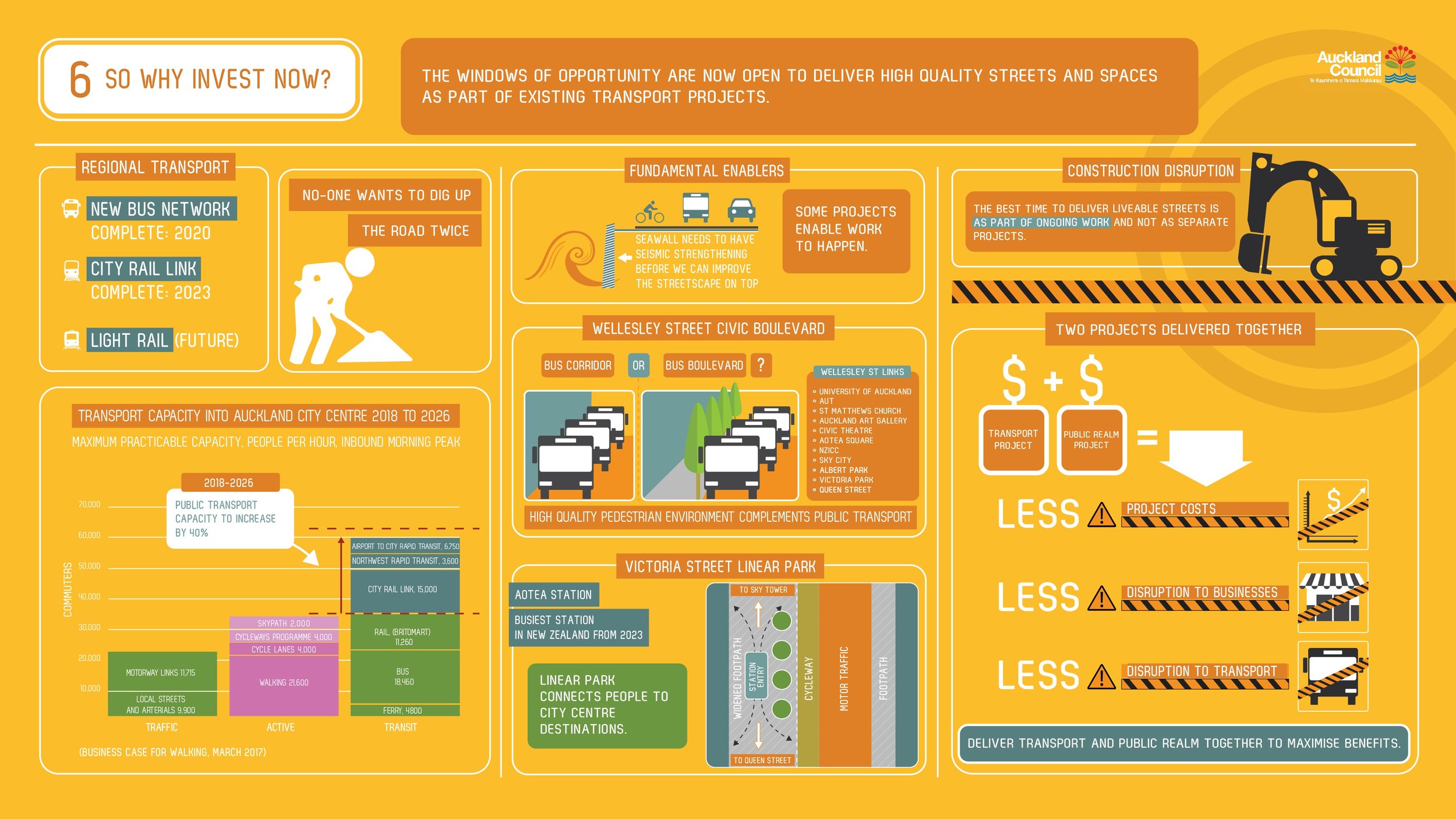Auckland has a vision for the City Centre and waterfront, with the opportunity to deliver a high quality urban environment alongside well-integrated public transport. The Auckland Design Office has produced six summary sheets to tell the story of the city centre and its importance to the whole of Auckland. Each summary sheet addresses a separate aspect of urban design in Auckland city centre.
The auckland design office has produced six summary sheets telling the story of auckland’s city centre
City Centre facts
The City Centre is made up of 16 SA2 (Statistics NZ)
Statistics NZ
The city centre comprises 433 hectares that closely correspond to Statistics NZ’s Census unit areas; Auckland Central West, Auckland Central East & Auckland Harbourside.
These 3 areas are further divided into 16 SA2 (Statistical Area 2) divisions, providing more finely-grained detail. The population is estimated at over 40,000 (2020). This includes over 2,000 school-age children (as of July 2017) who have to leave the city centre daily, as there are no state schools in the city centre. Population in 2006 was approximately 21,000.
The population is young - 58% are aged 15-29. and 70% aged between 15-35.
73% have no kids (compared to 35% in the rest of Auckland).
But there are over 1500 families with children living in the inner city.
The City Centre is growing 6 times faster than the rest of Auckland.
Auckland City Centre represents New Zealand’s highest population density at approximately 12,000 people per Km². The densest SA2 (Hobson Ridge Central) has 91,000 per Km².
The city centre dominates Auckland's apartment stock - 59% of all apartments are found here (2018).
There are around 21,400 residential SUIPs (separately used or inhabited part of a rating unit) that currently pay the CCTR (2020). Note that they may not all be dwellings as they could be carparks under their own titles. (There are around 500 of these types of SUIPs).
The city centre is growing at six times the rate of the overall region (2018). The growth in residential population has taken place alongside business growth. Over 10,000 jobs have been created in the city centre since 2012 and more than 100,000 people now work here.
CCRG is recognized by Auckland Council as the official residents group for the city centre.
Māori make up 6% of the Waitematā Local Board population, and there are three marae located within the local board area.
The growth of Auckland’s City Centre has also taken place against a flat lining in private car traffic. More people now live in the city centre than travel in by car. 50% have no vehicle (14% for the rest of Auckland).
Public transport and active travel have accounted for all increases in trips and now constitute the majority of peak trips into the city centre.
There are now more residents in the city centre than morning peak private car commuters.
20% of city centre residents use a car to get to work.
There are an estimated 500,000 walking trips in the city centre very day.
Although Auckland city centre comprises only 0.8 per cent of the overall area of Auckland, it contributes 7.4% of NZ, and 20% of Auckland GDP. City Centre GDP was $16B (2016).
Council's CensusAuckland website also provides data from the 2001 - 2018 Census, on population, age, ethnicity, income and more.
Census 2023 is on 7 March 2023
In the city centre, over half of residents identify with an Asian ethnicity. Māori and Pacific peoples are generally under-represented in Waitematā when compared with the whole of Auckland.
You could count the number of single detached dwellings in the city centre on two hands.
About 100,000 students daily attend the two universities and other education providers located in the City Centre. The University Of Auckland has accommodation for 3,000, projected to rise to 7,500 by 2026.
Pedestrians have doubled in Queen Street since 2012. There are now 60,000 pedestrians daily, and 12,000 cars.
Total city centre employment is approaching 120,000. (90,000 in 2012)
Wynyard Quarter is a mixed-use development underway on this prime piece of waterfront land. An additional 11,000 workers and 2,000 residents are expected in the precinct over the next 10 years.
Although there are also approximately 11,500 businesses, the term ‘CBD’ (for Central Business District) has been replaced with ‘City Centre’ to better describe and include the wide range of users and occupants that now enjoy this space - including residents.
Auckland's City Centre is one of the most multicultural residential neighbourhoods in New Zealand - 180 ethnicities. Presently about 41% of its residents speak English as a second language (2013)
The city centre plays a large role in both the regional and national economy. In 2016, the city centre contributed an estimated $16 billion to GDP, accounting for 20 per cent of Auckland’s GDP and 7.4per cent of New Zealand’s GDP.
20,000 visitors/tourists enter the city each day. Amongst the city centre’s heritage offerings: 215 Heritage Places, 2 Historical areas (including K Rd), 15 Places of significance to mana whenua, 41 Notable trees, 3 heritage View shafts, 50 character buildings, 693 places on the CHI (cultural heritage index).
The city centre deprivation index ranges from most to least deprived.
Although not having a car, or needing heating might be a positive of city centre apartment living, and not a deprivation.
More info on the HERE
Auckland Art Gallery Toi o Tāmaki

